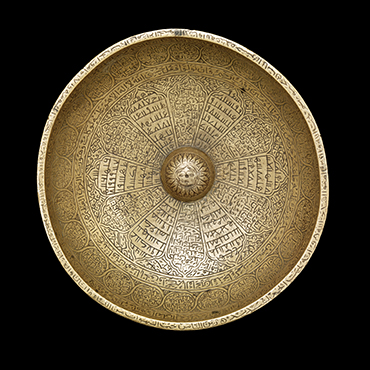Inaugurated in AH 1429/2008 CE, the Museum of Islamic Art (MIA) in Doha is one of the few museums in the world dedicated to Islamic art. In a building conceived by I.M. Pei, MIA now stands as a landmark in Doha’s landscape and holds an international presence with its unique collection that covers some 1,400 years of history, representing the full scope of Islamic art, from the 1st to 15th centuries AH/7th to 21st centuries CE, and spanning Spain to China.
MIA’s permanent galleries have recently undergone a reinstallation aimed at contextualizing the collection through broader artistic, historical, geographical, and cultural themes, while positioning it as a center for knowledge at the heart of new reflections on Islamic art. MIA also wished to introduce topics that are rarely presented in other institutions, particularly sections on Islam in Southern and Eastern Asia, which is of particular relevance for MIA in the light of the significant South and Southeast Asian communities living in Qatar.
MIA has collaborated with the Diriyah Biennale Foundation since its first edition. This partnership is part of the vision for cultural collaboration shared by Saudi Arabia and Qatar. This year’s presentation reflects on symbolic numbers in Islamic religious practices, including those used for protective purposes. Examples include the 99 Beautiful Names of Allah (Asma’ Allah al-Husna), certain Qur’anic verses, and special arrangements of numbers on an array of objects.
Talismanic bowl
The production of metal bowls with inscriptions like this one probably began in the 5th to 6th centuries AH/11th to 12th centuries CE in Egypt and Syria, likely evolving from earlier Islamic and pre-Islamic traditions and eventually spreading to other parts of the Islamic world.
The entire inner and outer surfaces of this bowl are densely covered with Qur’anic verses and prayers in a cursive script. Inside the scalloped cartouches are several lines of additional letters and numbers. These are repeated several times, perhaps because of the numerical value they represent in the abjad system. A rounded boss at the center of the bowl features a sun encircled by rays. On the exterior are circular medallions with representations of the zodiacal constellations.
Iran, AH 903/1497–98 CE
Brass, h. 4 × diam. 14.7 cm
Museum of Islamic Art, Qatar Museums, Doha, MW.437.2007

